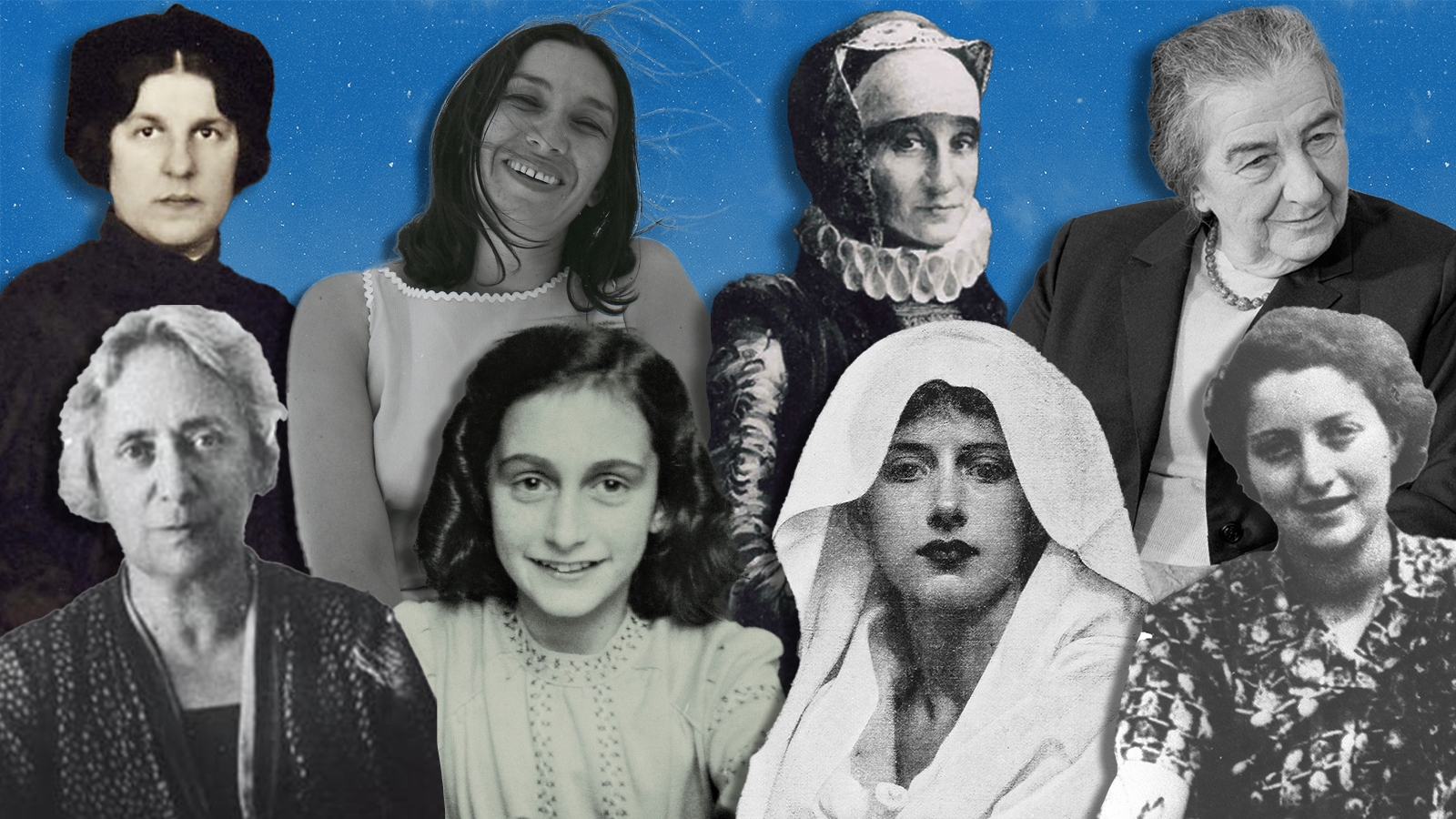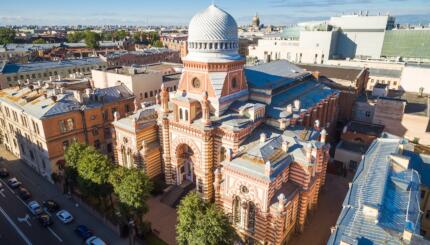From biblical times to the present, Jewish women have given hope, meaning and strength to the Jewish community. These twelve remarkable Jewish women have shown extraordinary leadership, changed the course of Jewish practice, offered comfort and hope, and injected creativity into the Jewish world.
Ruth
The biblical Ruth was a Moabite woman who chose to remain with her mother-in-law Naomi after the death of her husband — even if it meant a life of poverty in a foreign land. She pledged herself to her mother-in-law like this: “wherever you go, I will go; wherever you lodge, I will lodge; your people shall be my people, and your God my God.” (Ruth 1:16) She is considered the model for conversion to Judaism. Ruth’s story is read yearly on the holiday of Shavuot, telling a tale of the power of kindness and of those who make the Jewish nation their chosen family.
Deborah
With your help, My Jewish Learning can provide endless opportunities for learning, connection and discovery.
Deborah was a judge, prophet, military strategist and poet. The book of Judges supplies what we know about this multi-talented revolutionary. As a leader in the battle against the ancient Canaanites, she took great risks, and her courage paid off. After the war was won, she composed her exquisite “Song of Deborah,” and then returned to her palm tree, from whence she continued to advise the nation. Some 3,000 years later, 19th-century Italian Jewish communities chose her song to mark their bat mitzvahs, celebrating her legacy of leadership.
Esther
The title character of the megillah read yearly on Purim, Esther was once an uncertain orphan girl and ultimately grew into a decisive leader. Brought to the Persian palace as a potential bride for the king, Esther won his heart but kept her Jewish identity secret. Only when royal advisor Haman’s genocidal intention became clear did she step into the fray, rallying her community around her in prayer and putting a plan into motion, ultimately revealing her identity and delivering her people from Haman’s plot.
Bruriah
Few women in talmudic times were known for their scholarship, but Bruriah, with her sharp tongue and even sharper intellect, studied alongside the men in her community. She advised and corrected her husband, the renowned Rabbi Meir, on religious matters. At a time when women were not welcomed into the beit midrash, the house of study, Bruriah walked right in — serving as a model for young women up to the present day.
Asenath Barzani
Asenath (Osnat) Barzani’s father headed four yeshivas in 16th-century Kurdistan and he raised her to be a scholar. When her father passed away, Osnat began to teach in his yeshiva in Mosul in his stead, and eventually took over. She was not a rabbi but the community gave her the title tanna’it, teacher. It was believed that she could work miracles and her name was used in amulets for luck and health. After her death, her grave became a pilgrimage site for the women of Kurdistan.
Glückl of Hameln
Born in 17th-century Germany, Glückl married when she was only a teenager. She raised 14 children, but also held an active role in her husband’s business; she took over when he was killed suddenly and began traveling throughout Europe. Glückl chronicled her life in a series of diaries written over the course of 28 years. They were meant as an ethical will for her children to read, and included stories of the sages, legends and advice — but they are now historically significant as the only known pre-modern Yiddish memoirs and an important window onto German-Jewish life in this period. They also offer a singular portrait of a resilient, resourceful woman.
Regina Jonas
An Orthodox Jew raised in Berlin, Regina Jonas harbored dreams of being a rabbi from childhood. She fought her way into rabbinical seminary and ordination, becoming one of the first female rabbis. When the Orthodox community would not accept her, she cared for the religious needs of Jews in hospitals, nursing homes and even prison. When the Nazis rose to power, she chose to stay with her community and offer solace and support, trying to maintain a life of scholarship and Jewish communal activity in the ghetto. She was killed in Auschwitz in 1944.
Anne Frank
At age 13, Anne Frank and her family went into hiding from the Nazis. Her diary was her closest companion; in it, she shared her hopes, fears and dreams. Though the Jews in the “secret annex” where she and her family hid were discovered and deported, and though her life was cut tragically short in a concentration camp at age 15, her words live on in 75 different languages, giving a face and a voice to the horrors of the Holocaust.
Hannah Senesh
Though she was born in Budapest, when she was still a teenager Hannah Senesh moved to the land of Israel, then under the British mandate. She enlisted as a paratrooper with the British Women’s Auxiliary Air Force when World War II threatened Jewish communities in Europe. She parachuted into Hungary with her comrades but was caught a few weeks later and endured months of torture before being sentenced to death by firing squad at age 23. Not only her example but also the Hebrew poetry she wrote continues to inspire, including perhaps her most famous lines in the poem Eili, My God:
My God, My God — may there be no end to
The sand and the sea,
The water’s splash,
The lightning’s flash,
The prayer of man.
Henrietta Szold
Born in Baltimore, Henrietta Szold served as aide to her father, a rabbi and scholar, and then became the first woman to attend the Jewish Theological Seminary. But her life changed on a 1909 visit to the land of Israel, when she was shocked by the rampant poverty and disease. Henrietta founded Hadassah, which rallied women to raise funds for healthcare and ultimately set up clinics throughout the land. She moved to the land of Israel, joined the Jewish National Council to work on health and education initiatives, and directed the Youth Aliyah program, which brought some 15,000 teens to safety during Hitler’s reign. Though she never had children of her own, the anniversary of her death is celebrated as Israel’s Family Day.
Golda Meir
Born in Ukraine and raised in Ukraine and the U.S., Golda Meir moved to the land of Israel at age 23 where she distinguished herself in a life of public service, rising ultimately to serve as Israel’s minister of labor for seven years, minister of foreign affairs for 10 years and, finally, prime minister for five years, seeing the country through the Yom Kippur War.
Naomi Shemer
Naomi Shemer’s songs are the soundtrack of the young State of Israel. Born on a kibbutz in 1930, she began playing piano at age six and accompanied the kibbutz celebrations. She grew up to write such songs as Al Kol Eleh (“For All These Things”), Od Lo Ahavti Dai (“I Have Not Yet Loved Enough”), and Yerushalayim Shel Zahav (“Jerusalem of Gold”). Her songs, often evoking her Jewish and Israeli heritage and the nature that surrounded her, define the Israeli experience.
Aliza Lavie is a former Member of Israel’s Knesset and a vocal public figure for women’s empowerment in Israel. She is the award-winning author of five books, including her latest, Iconic Jewish Women, now available on Amazon.



